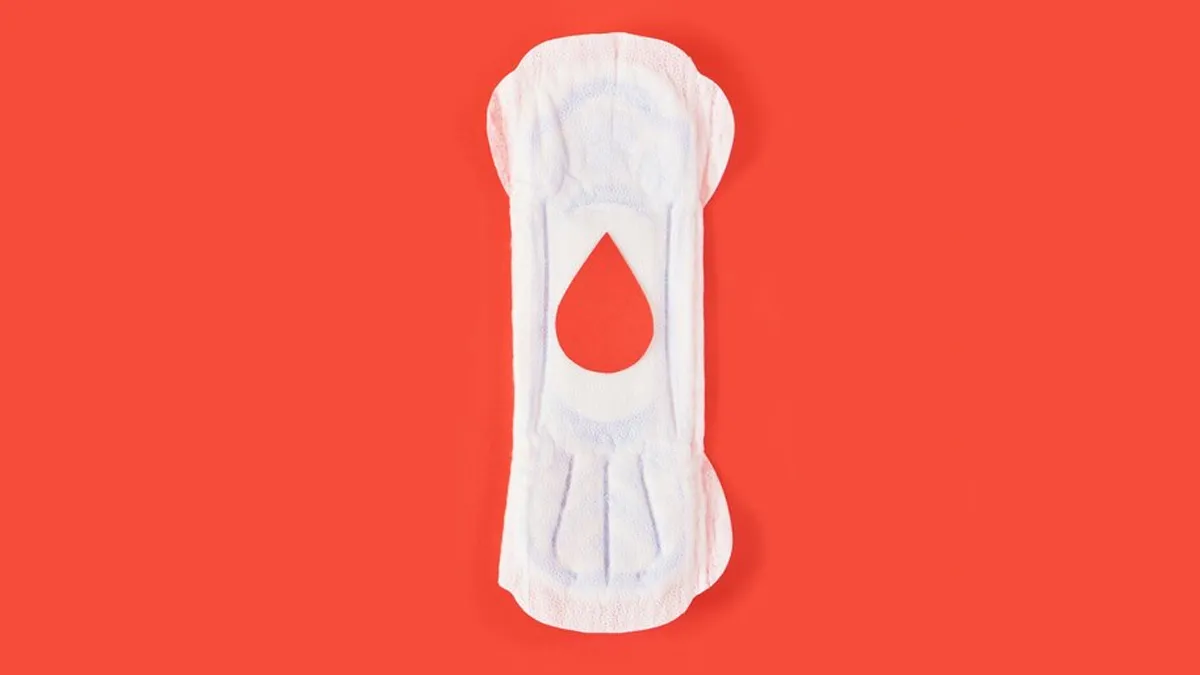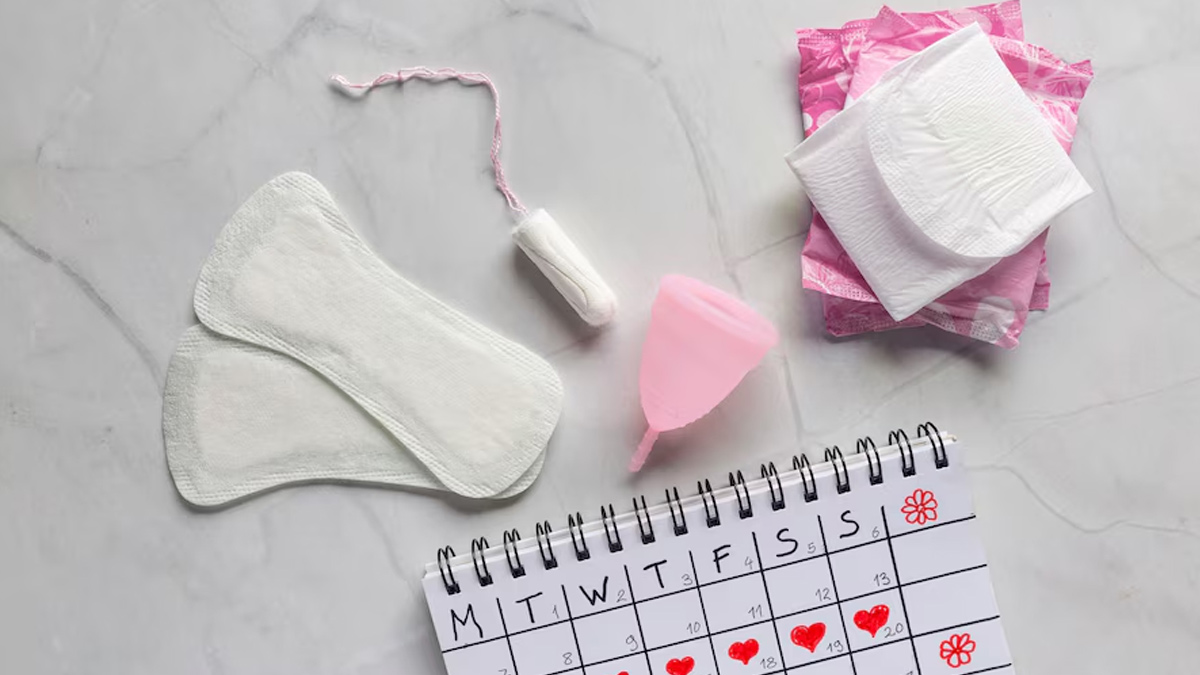
Many people experience blood clots during their periods, which can range from tiny specks to larger clots. Though clots during menstruation are generally normal, they sometimes raise questions about what they indicate and if they signal underlying health concerns.
Table of Content:-
Hence, understanding why blood clots form, what they may indicate, and how to manage them can help you feel more comfortable during your cycle. In an interaction with OnlyMyHealth editorial team, Dr Ruchi Srivastav, Senior Consultant, Department of Obstetrics and Gynaecology, Sharda Care Hospital shared some exclusive insights. Read ahead to know!
Why Do Blood Clots Form During Periods?
Blood clots form naturally in response to heavier menstrual bleeding. "When you menstruate, the body releases anticoagulants to prevent blood from clotting as it exits the uterus. However, if the flow is particularly heavy, the blood may leave the uterus faster than the anticoagulants can work, resulting in clots," Dr Srivastav shared. This is a natural process, and occasional small clots are usually harmless.
However, if you consistently experience large clots, it could signal that something else is contributing to the heavier flow. Hormonal fluctuations, structural abnormalities in the uterus, and certain health conditions can all influence clot formation during menstruation.

Also Read: Expert Shares A Comprehensive Guide On Benefits Of Vitamin B6 For Mental and Physical Well-Being
Common Causes of Blood Clotting During Periods
Dr Srivastav explained that there are several factors which can contribute to heavy bleeding and clot formation. These may include:
1. Hormonal Imbalance
Oestrogen (the hormone essential to the development and maintenance of female sexual health) and Progesterone (which is the endometrium, or uterine lining, for the implantation and growth of a fertilised egg) help regulate the menstrual cycle. When these hormones are out of balance, it can lead to heavier periods and clotting.
An excess of oestrogen, in particular, may thicken the uterine lining, causing a heavier flow. A study published in The Journal of Cureus highlights that elevated oestrogen levels are often linked with heavier periods, which can contribute to more frequent clotting.
2. Uterine Fibroids and Polyps
Fibroids are non-cancerous growths in the uterus, and polyps are smaller, benign growths in the uterine lining. Both can increase menstrual bleeding and lead to clot formation. A 2017 study from Frontier in Pharmacology found that women with uterine fibroids often report heavy menstrual bleeding, which can contribute to frequent clotting.

3. Endometriosis
Endometriosis occurs when the tissue that normally lines the uterus grows outside of it, which can cause heavy and painful periods, often with clot formation. A review in StatsPearls emphasised that endometriosis is closely associated with increased menstrual flow and clotting, especially in severe cases.
4. Polycystic Ovary Syndrome (PCOS)
PCOS is a hormonal disorder that can disrupt menstrual cycles and lead to heavy bleeding. People with PCOS may have fewer periods, but when they do menstruate, the flow is often heavier and can lead to clotting. Another research published in StatPearls shows a strong connection between PCOS and irregular, heavy bleeding due to imbalanced hormones.
5. Adenomyosis
Adenomyosis is a condition where the uterine lining grows into the muscle wall of the uterus, which can cause painful, heavy periods with clotting. According to studies, including one in the Thieme adenomyosis is frequently linked with an increase in both menstrual pain and the incidence of clots.
Also Read: Chhath Puja 2024 Healthy Fasting Tips For Pregnant Women
What Do Blood Clots During Periods Indicate?
While small clots are normal, very large clots or a sudden change in menstrual pattern may indicate an underlying health issue. According to Dr Srivastav here are a few signs that warrant a consultation with a healthcare provider:
- Large or frequent clots (larger than a quarter in size)
- Consistent heavy bleeding that requires frequent tampon or pad changes
- Sudden changes in your menstrual pattern that include more clots
- Severe pain alongside clotting
If you experience any of these symptoms, a medical evaluation can help rule out conditions such as fibroids, endometriosis, or hormonal imbalances.
Prevention Tips for Reducing Clot Formation
While you may not be able to prevent all clots, certain lifestyle and dietary changes may help manage heavy bleeding and reduce clot formation:
1. Maintain a healthy weight
2. Consume an iron-rich diet
3. Stay hydrated
4. Manage stress
5. Consider a balanced diet with anti-inflammatory foods
When to Seek Medical Help?
If blood clots during your period are becoming more frequent or accompanied by severe pain and other unusual symptoms, it’s wise to consult with a healthcare provider. Treatments may include hormonal therapies, medications to manage bleeding, or lifestyle recommendations. For structural issues like fibroids, polyps, or adenomyosis, other treatments such as surgery may be recommended.
Takeaway
By understanding the factors that contribute to clot formation and adopting healthy lifestyle habits, you can better manage and potentially reduce heavy menstrual bleeding. And remember, if clots are accompanied by discomfort or other symptoms, a healthcare provider can help ensure there’s nothing more serious going on and offer treatment tailored to your needs.
Also watch this video
How we keep this article up to date:
We work with experts and keep a close eye on the latest in health and wellness. Whenever there is a new research or helpful information, we update our articles with accurate and useful advice.
Current Version
